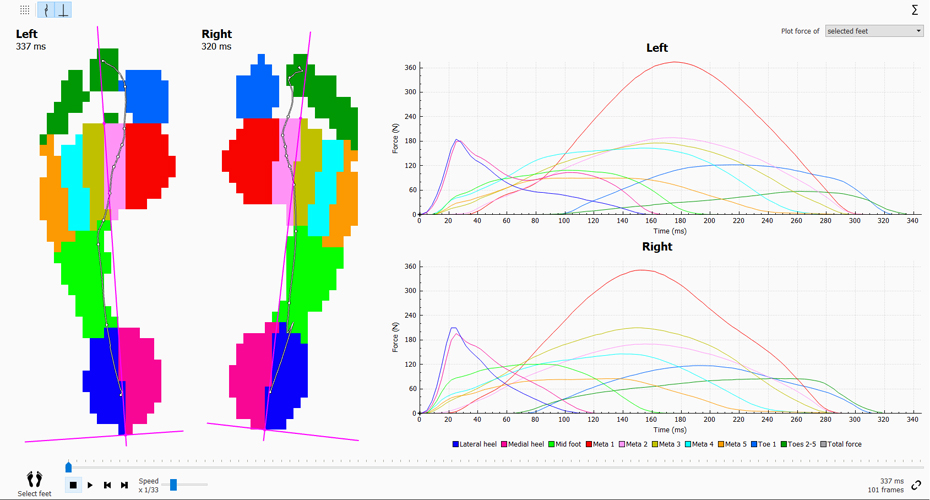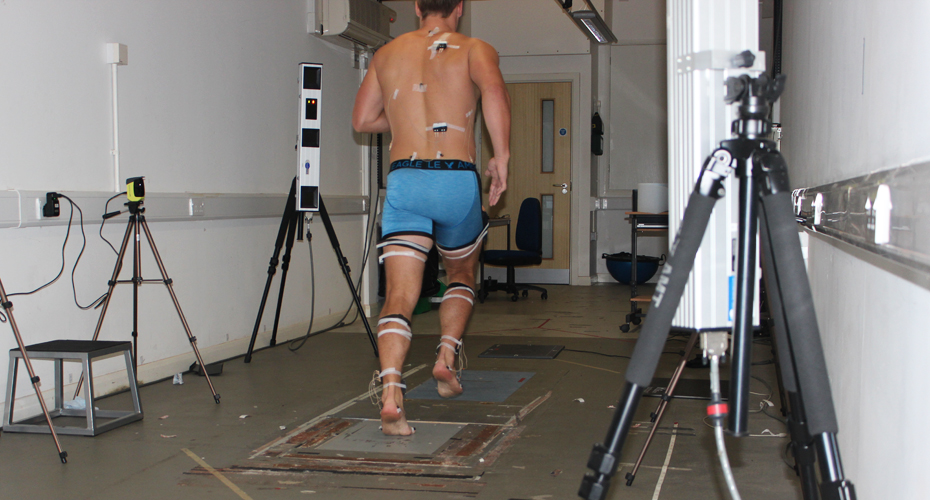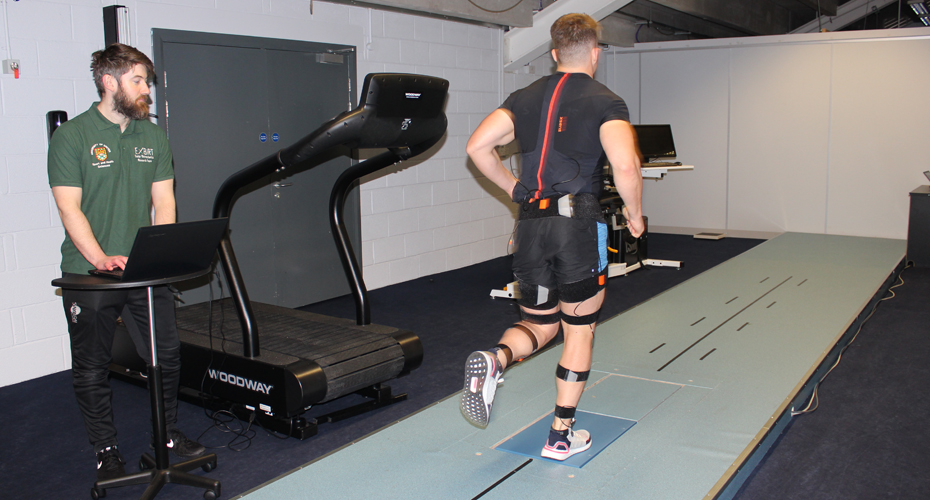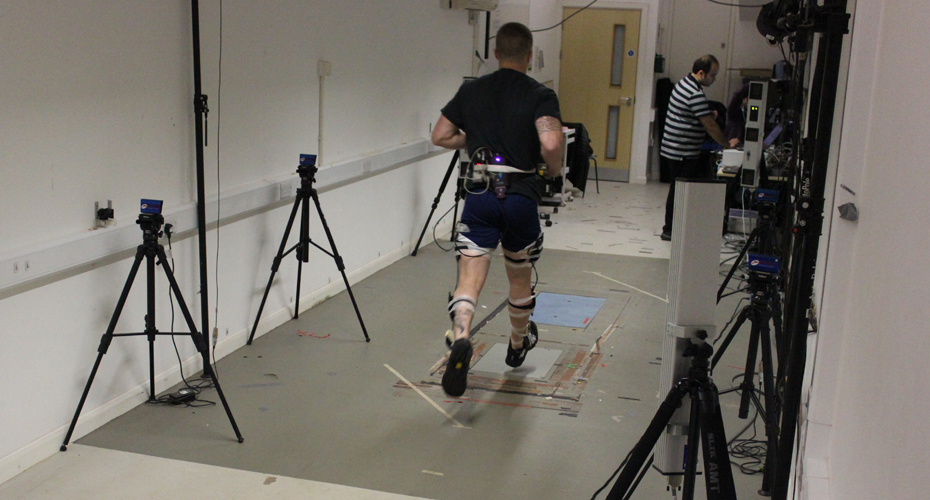Biomechanical analysis for treatment and management of injury in sport and exercise
Project lead: Dr Sharon Dixon

Exeter Chiefs Rugby Union
Other project staff: Dr Dominic Farris, Jamie Fulton (Exeter Chiefs), Alfie Moxon (Exeter Chiefs)
For Exeter Chiefs Rugby Union Club, management of injury risk, treatment and rehabilitation is critical to maintain optimal performance. The collection of biomechanical measures at the University of Exeter, including movement, loading and strength data, for all players during pre-season training for five consecutive playing seasons (see image 1) has informed the development of screening methods now utilised in a purpose-built gait laboratory at Sandy Park, home of Exeter Chiefs (image 2). This approach is being used to inform treatment and support rehabilitation.

Image 1: Collecting biomechanical measures for rugby players
Our partnership with Exeter Chiefs: research and application
Exeter Chiefs have demonstrated their commitment to this collaboration through the support of PhD projects, partnership funding through a Knowledge Transfer Partnership (Innovate UK), and the development of a dedicated sports science laboratory at their stadium (see image 2).
This support of research focused on the identification of risk factors for injury and application of results to injury management, together with the integration of sports science with the day-to-day activity of the club, is a model that can be applied in other elite sports settings.

Image 2: Exeter Chiefs have developed a dedicated sports science laboratory as part of this project
Royal Navy and Royal Marines
Other project staff: Dr Matthew Ellison, Dr Chris Byrne
The Royal Marines are one of the most elite military forces in the world, with a particularly arduous training programme. Injury compromises the effectiveness of these troops and can have a high personal and financial cost.
Our programme of research over the last two decades has been crucial for reducing the cost of injury in this population by providing biomechanical evidence regarding risk factors for injury and developing interventions to reduce injury risk.
We have demonstrated how aspects of foot type and function are associated with risk of injury, leading to the routine measurement of biomechanical data to support the management of injury risk in this population (see publications 1, 2 and 3 below). Subsequent biomechanical studies have influenced the selection of standard-issue footwear for the Royal Marines (publication 4).
This systematic approach to the identification of biomechanical risk factors for injury to inform the development of interventions is being integrated with the study of additional risk factors such as movement screening, nutrition and health. This will inform the development of a programme to improve the understanding of risk factors for injury in Royal Navy and Royal Marines populations.

Related publications
- Dixon S, Nunns M, House C, Rice H, Mostazir M, Stiles V, Davey T, Fallowfield J, Allsopp A (2018). Prospective study of biomechanical risk factors for second and third metatarsal stress fractures in military recruits. Journal of Science and Medicine in Sport, 22(2), 135-139. DOI.
- Nunns MP, House CM, Rice H, Mostazir M, Davey P, Stiles V, Fallowfield J, Allsopp A, Dixon SJ (2016). Four biomechanical and anthropometric measures predict tibial stress fracture: A prospective study of 1065 Royal Marines. British Journal of Sports Medicine. DOI.
- Rice HM, Nunns M, House C, Fallowfield J, Allsopp A, Dixon S (2016). A narrow bimalleolar width is a risk factor for ankle inversion injury in male military recruits: a prospective study. Clinical Biomechanics. DOI.
- Nunns M, Stiles V, Dixon S (2012). The effects of standard issue Royal Marine recruit footwear on risk factors associated with third metatarsal stress fractures. Footwear Science. DOI
- Dixon, S., Rice, H., Carden, P., Patel, M., Han, S., Hales, R., Davey, P., Fallowfield, J. (2017). Changes in lower limb biomechanics and metatarsal stress fracture with different military boots. Footwear Science. DOI.
- Rice H, Fallowfield J, Allsopp A, Dixon S (2017). Influence of a 12.8-km military load carriage activity on lower limb gait mechanics and muscle activity. Ergonomics, 60(5), 649-656. DOI.
- Carden, P., Bru, B., Jones, A. & Dixon, S. (2017). Influence of rugby surface type and boot stud length on lower limb biomechanical variables associated with Achilles tendinopathy during Rugby Union specific movements. Footwear Science. DOI: 10.1080/19424280.2017.1314379



